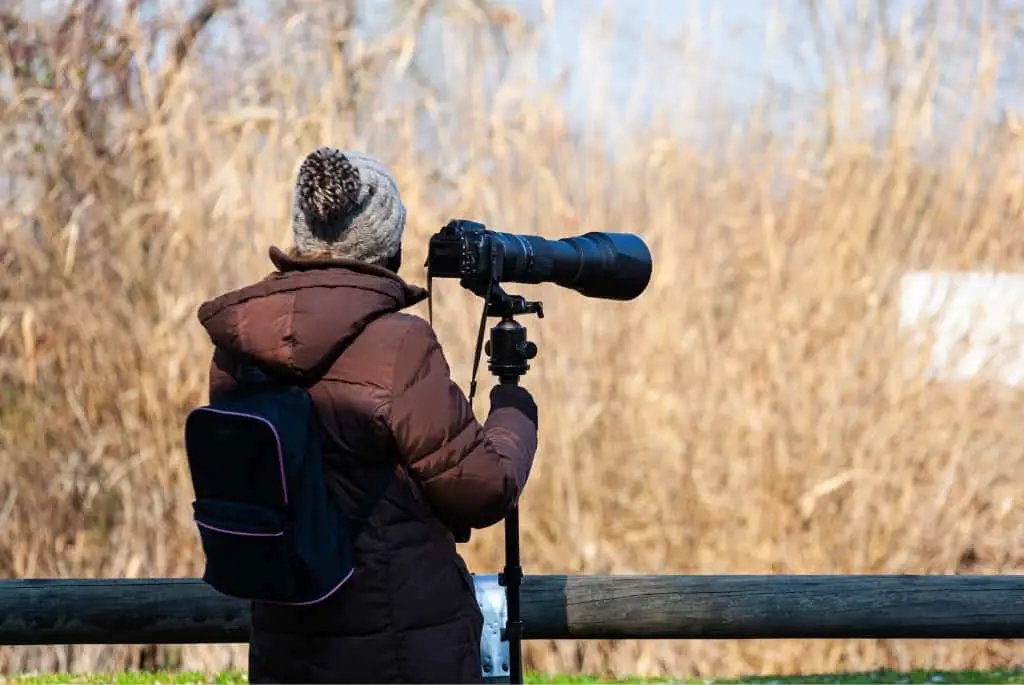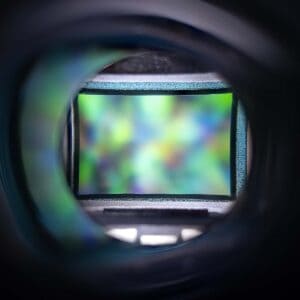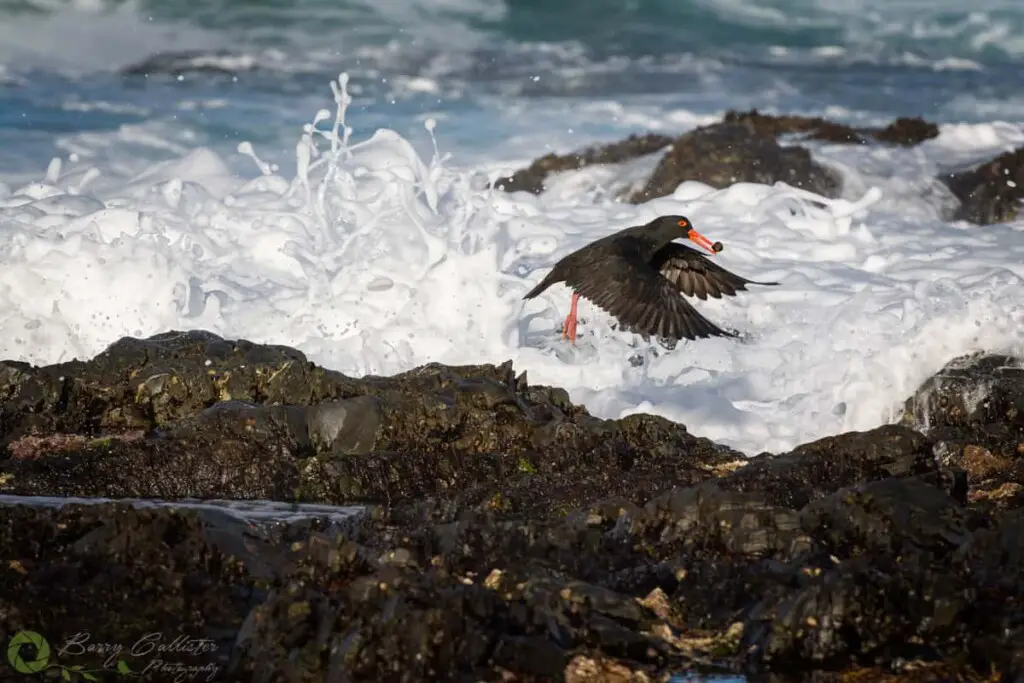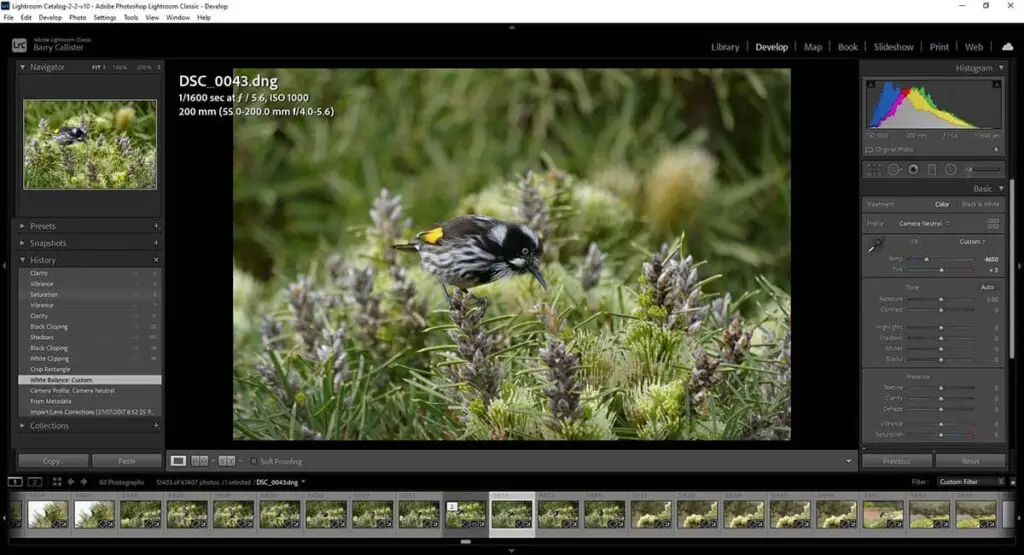
Is 300mm enough for bird photography? You are about to get the answer from a professional bird photographer with over 5 years of experience.
As a general rule, 300mm is enough focal length for bird photography. There are however a number of factors that determine the suitability of such a lens for this type of photography: magnification of the subject, camera sensor size, and the species being photographed are all determining factors.
Continue reading for more information about 300mm lenses and their suitability for bird photography. We will explore these 3 determining factors and also look at some example images taken with 300mm and 200mm lenses.

As an Amazon Associate, I earn from qualifying purchases. Birdwatch World earns commissions from Amazon and similar affiliate programs from any purchases made via links in this article.
How Much Magnification Does A 300mm Lens Give?
How much of the frame do you want the bird to fill?

If you are wanting to take photos of birds in your backyard, at a local park, or down at the beach, then 300mm is most likely going to be enough for you.
Most birds that frequent parks, the beach, or your backyard are fairly used to human interaction. They have seen us before, they know what we’re about and they are for the most part, not that afraid of us.
A 300mm focal length will fill the frame with a bird around 20cm tall from 4.7m away, using a camera with a 1.5x crop sensor. Most backyard birds will allow a human to approach within 4 or 5 meters. Images can also be cropped in post-processing to achieve the effect of greater zoom.
Unless you have a backyard that is the size of a football field, a lens with a focal length of 300mm is going to be enough. You will be able to get some nice, close shots of many different birds.
How Camera Sensor Size Affects Zoom
Hopefully, you are aware that digital cameras come with sensors of different sizes in them.

You would have heard the term “full-frame camera?” Well, a full-frame camera has a sensor equivalent to the frame size of 35mm film (36mm X 24mm). Take a look at the table below with some common camera sensor sizes and their dimensions:
| Sensor Type | Crop Factor | Width (mm) | Height (mm) |
| Full Frame (Nikon/Sony/Canon) | 1x | 36.0 | 24.0 |
| APS-C (Nikon/Sony/Pentax) | 1.5x | 23.6 | 15.6 |
| APS-C (Canon) | 1.6x | 22.2 | 14.8 |
| Micro 4/3 (Olympus/Panasonic) | 2x | 17.3 | 13.0 |
But what on Earth has this got to do with your 300mm lens and its suitability for bird photography?
The thing about having a 1.5x crop sensor in your camera is that it acts as a bit of extra zoom. A 300mm lens on the front of a 1.5x crop sensor camera becomes a 450mm lens. We simply multiply the focal length by the crop factor:
300 X 1.5 = 450
This is because the smaller sensor “crops” the image in, compared to what a full-frame sensor sees. This is why one of the factors that determine if 300mm is enough for bird photography is the size of your camera’s sensor.
For more information about this effect, watch this video by Tony Northrup in which he demonstrates the effect of different crop factors.
What Birds Are You Photographing With Your 300mm Lens?
You need to ask this question because some birds are timider than others and hence you can get closer to some than you may to others. This means that you may not need as much zoom as you think you do.
There are bird species, such as Crimson Rosellas here in Australia that will allow you to approach them quite close before they become wary of you. For these types of birds, you just don’t need a long zoom lens.
Down at the beach, Sooty Oystercatchers are a different story. These adorable black birds with their bright orange beaks will not let you come within around 10 meters before they get nervous. In this case, you need that extra zoom to get you close enough.
Discover the best Sony camera and lens for bird photography on a budget in this article here on Birdwatch World.

Another thing about birds is they will quickly acclimatize to your presence. If you sit still and quiet long enough, most birds will go about their business as if you are not even there. This negates the need for lenses with super-long zooms.
The Visual Proof
The following images were taken with my Nikon D5200 and a Nikkor AF-S 55-200mm f/4.0-5.6 lens.
I have taken screenshots of Lightroom displaying the camera and lens information. You will also notice that I am in the Develop Module and have selected the point of development before any cropping was applied.
Images Taken With A 200mm Lens
This first image of a New Holland Honeyeater was taken at 200mm. You can see from the menu on the left-hand side that I selected the item in the History before cropping was applied.
This bird was from memory around five or six meters from the camera when I took this photo.
Here we have an example of just how close you can get to birds if you have patience (or chocolate muffins!). This Purple Swamphen came right up to me in Emerald Lake Park in Victoria, Australia. At the time of this photo, it was perhaps 1 or two meters from the camera, eyeing off a chocolate muffin I was eating! I did not feed the bird.
Images Taken With A 300mm Lens
Below are some example images that were taken at 300mm. Some have had cropping applied in post-processing and some have not.



The images above are proof that 300mm is more than enough focal length to get some impressive photos of birds.
In Conclusion
I have used a Nikkor AF-S 70-300mm f/4.5-5.6 G ED for years and rarely wished for more zoom. I have a Nikon D5200 which is a 1.5x crop sensor camera, thus I get that bit of extra zoom. In addition to this, I am lucky enough to live in a place where birdlife is abundant and I can get quite close to them.
I suggest learning to master a smaller zoom length like 200mm or 300mm before moving up to a longer lens. You first need to learn the skills involved in getting a bird in the frame and tracking it if it moves. This is much easier with a smaller zoom length. You will know when you are ready to go up to a bigger lens.
By weighing up the factors mentioned in this article, you should be able to make an informed decision. If you are starting in bird photography, 300mm is most definitely going to be fine. If you are a diehard bird photographer and are looking to photograph birds from a distance, then I would suggest looking at 400mm or even 600mm.
References:
- Compare Digital Camera Sensor Sizes – Photoseek.com.



